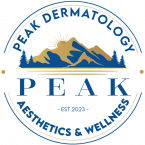
What Is a CO2 Laser Resurfacing?
Also Known As a Fractional Laser
Skin resurfacing treatments help to restore a more youthful, beautiful complexion by removing the most damaged outer layers of skin to reveal the healthier-looking skin beneath and encouraging new, healthy skin cell growth.
As the largest organ we have, our skin serves as the first line of defense, protecting us from wind, sun and debris as well as keeping out would-be microbial invaders. While it’s excellent at its job, over time the outer layers of our skin start to show wear and tear from aging, injury, and environmental factors in the form or wrinkles, scars, age spots and discoloration. Skin resurfacing treatments help to reverse these signs of aging and stress, helping you look younger, and even healthier, in the process.
When To Consider CO2 Laser Resurfacing
If any of the following describe you, CO2 laser resurfacing could be an option to consider:
- Wrinkled or sun-damaged facial skin
- Vertical wrinkles around your mouth, such as those that cause lipstick “bleed”
- “Crow’s feet” lines around your eyes and perhaps some skin laxity in your lower eyelid area
- Fine wrinkling of your upper eyelids
- Brown spots or blotchy skin coloring
- Certain precancerous skin growths
- Acne or chicken pox scars
- Superficial facial scars from a past injury
Types of Laser Resurfacing Treaments
Ablative Lasers
Ablative lasers remove outer layers of skin and encourage new skin to heal in its place. How deep the laser penetrates depends on the wavelength of the light; your cosmetic surgeon will determine the best laser application for you depending on your skin type, your goals, and the nature of the problem you wish to address. Today, more cosmetic surgeons are using fractionated lasers, which only remove a fraction of the skin in the treatment area. This allows the laser to safely penetrate into the deeper layers of skin to achieve more dramatic results with minimal downtime.
- Minimize fine lines or wrinkles
- Treat brown spots, redness or discoloration for more balanced skin tone
- Tighten skin and encourage collagen production
- Remove acne or surgical scars
- Remove unwanted facial or body hair
Non-Ablative Lasers
Some lasers do not break the skin’s surface; these are called non-ablative. They work instead by heating up the skin below the surface to encourage new collagen growth and help restore the skin’s natural firmness and tone. While they work more gradually than ablative lasers, these treatments typically require no downtime and can have lasting results for rejuvenating the appearance.
The improvements possible with laser resurfacing are long-lasting and can be dramatic, but they will not appear overnight. It takes several months for the full effects of new skin cell and collagen growth to take shape, and residual after-effects of treatment, such as skin that appears pink at the treatment site, can take a few weeks to subside. However, every patient is a little different. Dr. Rex and his experienced aesthetic staff will help you learn what type of results you might expect from different laser resurfacing treatment options during your consultation.
